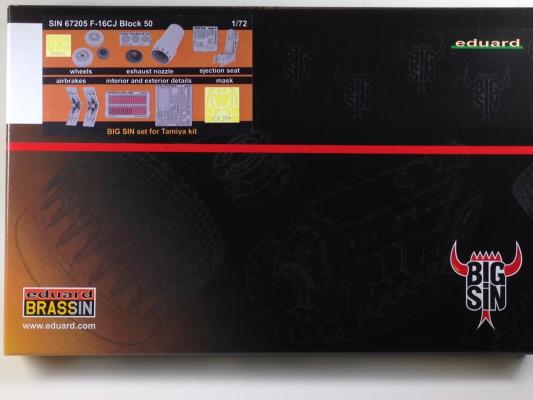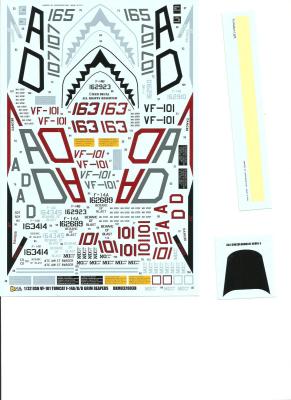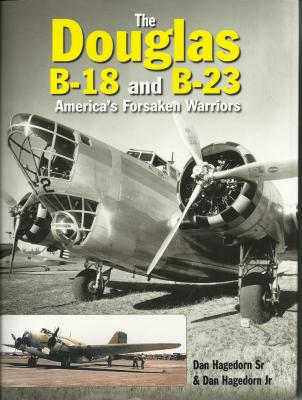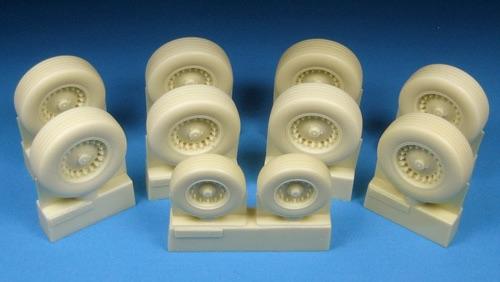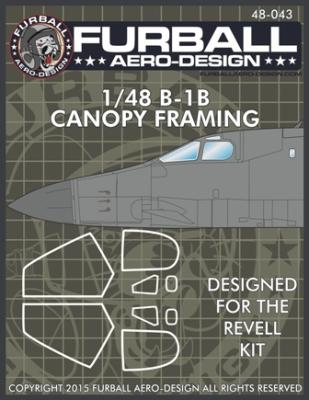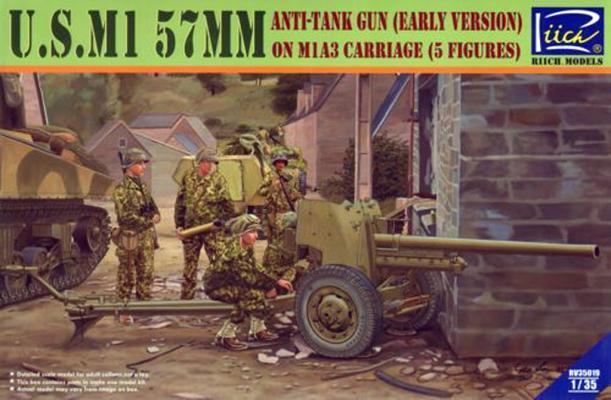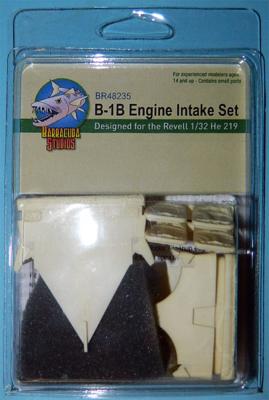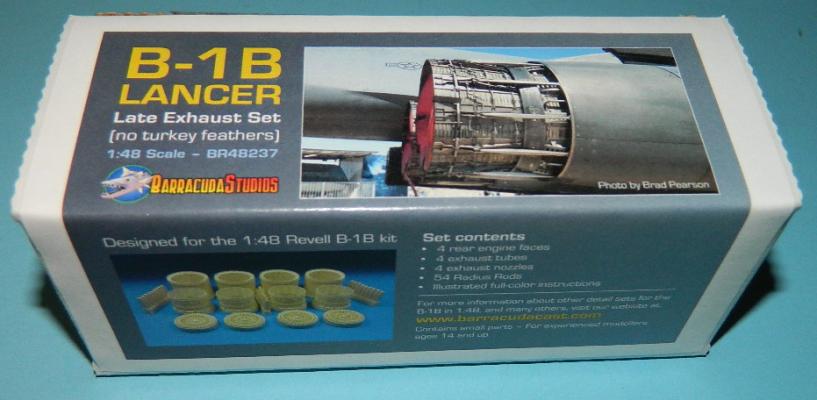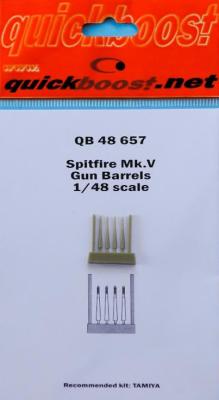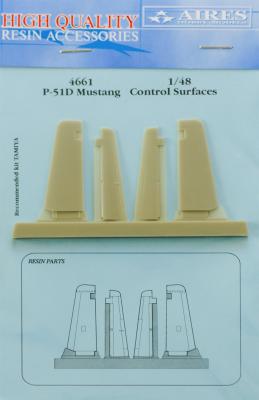Eduard’s BigSin set for Tamiya’s 1/72 Block 50 F-16CJ includes seven sets previously issued individually, creating a wonderful update set for the kit. The set includes resin replacements for the wheels, the ejection seat, the exhaust nozzle and open speed brakes. The set also includes two frets of photo-etch (one for the interior and one for the exterior details), a complete canopy mask set and a fret of prepainted remove-before-flight tags. As the sets were previously released individually, combining them into a single set results in some duplication, which is not a bad thing if you have another Tamiya F-16 kit in the stash.
What's New
About the Company
DXM which stands for Double Excellent Models was started by a group of modelers in Taipei, Taiwan. The group started manufacturing decals in 2010 covering a broad range of aircraft including an extensive list of Japanese air command meets.
What’s on the Sheet?
This sheet covers fabled Grim Reapers squadron of VF-101 anniversary previously of VF-52. This is a surprising feat as the Navy usually does not rename squadrons after disestablished units. The Grim Reapers operated primarily the F-14 Tomcat and has recently converted to the F-35C at Eglin AFB Florida. The aircraft covered are as followed:
Background
As described in Crecy Publishing information paper, “What manner of aircraft pioneered airborne radar and anti-submarine warfare, almost replaced the immortal Boeing B-17 Flying Fortress, and yet disappeared from the annals of aviation history with not so much as a footnote in most authoritative histories of the WWII? The elusive B-18 bomber.
The very few stories that have appeared since the end of the war invariably spoke of the aircraft in crude and disparaging terms including ‘the bomber that nobody wanted,’ but more than 30 surviving crew members who served aboard the aircraft had no such disparaging words. How could so many people be wrong?
Developed in parallel to the DC-1, the B-18 and it’s obscure development, the handsome B-23 were precisely the right aircraft, at the right time, to help America defeat the serious Axis submarine threat in the Caribbean and train most of the B-17 crews who headed overseas.
Roy Sutherland has been around for a bit, providing resin details we never knew could exist, but now do because of his commitment to improving basic products. This set is one of four that I used on the new (but old) Revell B-1B… they are in Roy’s “Barracudacast” resin accessories branch of his company. On to the review!
This set is comprised of eight Main wheel and tire assemblies, and two Nose wheel and tire assemblies for the B-1B. Sidewall letterngdetail is provided, and the tread is fantastic and deep like the actual high-speed radials used on the Bone. The original release of this kit back in 1983 contained styrene wheels with rubber tires. We know how well that works over time… so did Revell… so about 10 years or so ago, a couple of re-releases before this one, a set of styrene tire halves were provided to replace the rubber versions. Problem was, they weren’t accurate, being more balloon-like with almost no tread. Sometimes ya can’t win as a manufacturer.
Furball Aero design is one of the new companies that has been around for a few years, providing decals for many of the subjects we modelers of Modern Aviation subjects really want but rarely seem to get… Go to their site for details.
This decal is a simple but elegant way to deal with canopy framing… On the 1/48 B-1B, this framing is very prevalent. Now, I know many have not or will not build this kit. It’s huge. It has presence. And it’s an accurate rendition of the “Bone”. For the most part. But with work, it looks great when complete. This model is now on display on the overhead desk of my pod in our B-1/B-52 System Program office, and has garnered a lot of attention…
History
The British 6 Pounder Anti-Tank gun was manufactured in the US, in 1942. In early 1943, the US Army adopted it for their use and called it the 57mm Anti-Tank gun M1. The version adopted for the army was modified and supplied to the army with a modified towing hitch and “Combat” wheels. Most branches of the US Army considered the weapon as too heavy and it was also hampered by the lack of ammunition. In 1943 only simple armor piercing ammo was manufactured. It wasn’t until late 1944 before adequate AP ammunition was made available. The M1 could penetrate 75mm of armor angled at 30 degrees at a distance of 3000 meters. In spite of the shortcomings, by early 1944 the M1 had become the standard towed anti-tank gun of the US Army Divisions. The prime mover for the M1 57mm was the Dodge WC-63 and the White halftrack. Over 10,000 M1’s were built for the US Army and 4,242 for the British Army. The M1 was also used by the Free French and Russian armies.
Roy Sutherland has been around for a bit, providing resin details we never knew could exist, but now do because of his commitment to improving basic products. This set is one of four that I used on the new (but old) B-1B… they are in Roy’s “Barracudacast” resin accessories branch of his company. On to the review!
This set is comprised of two sets of intakes, and four intake plugs used while the aircraft is on the ground to prevent Foreign Object Damage (FOD). It is relatively simple in use, but requires some mastery of measurement, installation, and Putty/filler work. Up front, this set does NOT address the intake trunking. It only corrects the inaccurate B-1B intakes at rest.
Roy Sutherland has been around for a bit, providing resin details we never knew could exist, but now do because of his commitment to improving basic products. This set is one of four that I used on the new (but old) Revell B-1B… they are in Roy’s “Barracudacast” resin accessories branch of his company. On to the review!
This set is comprised of four sets of exhaust augmentor tubes, four augmentor flame holders, four sets of exhaust nozzles without turkey feathers, and three sets of support arms sufficient to detail all four nozzles. It is relatively simple in concept, but requires some mastery of measurement, plastic removal on parts, and care with removal of the support arms from the casting block. Roy also offers PDF instructions for those who need larger versions on his website.
QuickBoost provides you with four 20mm Hispano Mk. II cannon barrels with the smooth barrel fairing removed and replaced with a vented fairing to cover the recoil spring. Please note that there was quite a bit of variety in the exposed barrel of the 20mm Hispano Mk. II cannon depending on what type of wing it was installed in. The Spitfire Mk Vc and Mk Ve wing had different style fairings. The Hurricane, Typhoon, and Mosquito installations and fairings were also quite different.
Of note is the re-sealable packaging that QuickBoost uses that makes the parts easy to review and then stuff back into the package securely. There are no supplied instructions; you simply swap out the kit provided plastic parts with the new QuickBoost replacements. These QuickBoost parts are specific replacements for the kit parts found in the Tamiya series of Spitfire Mk Vb kits. If you have the new Airfix 1/48 Spitfire Mk Vb kit, the QuickBoost QB 48 635 set is designed specifically for it.
Wanting to make your P-51D just a bit different by showing the elevators in action? Aires has come to the rescue with a beautiful set to replace the horizontal tail surfaces for the North American P-51D Mustang. There are no supplied instructions; you simply swap out the kit provided plastic parts with the new Aires replacements. These Aires parts are specific replacements for the kit parts found in the Tamiya series of P-51D kits.
Aires has molded the stabilizer and elevator perfectly in light grey resin with no apparent bubbles. The Aires stabilizer and elevator are supplied on a single resin sprue with thin resin attachments to the parts that should minimize any cleanup.

